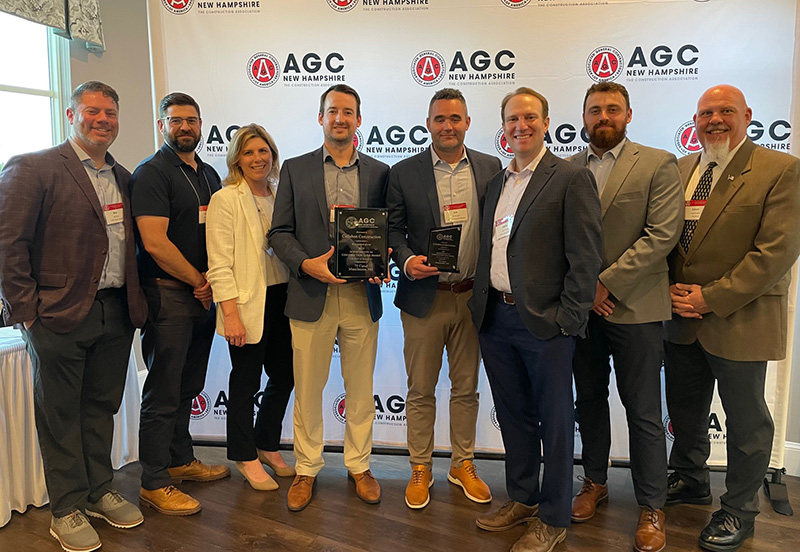News: Construction Design & Engineering
Posted: February 14, 2008
Historic tax credits are a key incentive to property owners for their restoration projects
Owners of properties listed in the National Register of Historic Places are eligible for a 20% Federal Rehabilitation Tax Credit (FRTC) for the certified rehabilitation of income-producing certified historic structures such as commercial, industrial, or rental residential buildings. In addition, many states including Mass., Conn. and R.I. have initiated state historic tax credit programs. The Mass. and Conn. historic tax credit programs are for 20% of qualified expenditures and the R.I. tax credit program is for 30% of qualified expenditures.
To earn the 20% FRTC there are four threshold tests, as follows:
(1) the building must be income producing or used in a trade or service,
(2) it must be listed in the National Registry of Historic Places,
(3) the rehabilitation must meet a substantial rehabilitation test, and
(4) leasing to less than 35% of eligible space to a non-profit, government or other tax exempt entity.
The FRTC program is administered by the National Park Service (NPS), which is part of the U.S. Department of the Interior, in conjunction with State Historic Preservation Offices. There is a three-part Historic Preservation Certification Application, as follows:
* Part 1, Evaluation of Significance, involves obtaining certified historic structure status for the property
* Part 2, Description of the Rehabilitation, consists of a property narrative, pictures that outline the architectural and historical features of the building in its current state and a description of the proposed work. Approval is granted if NPS standards are fulfilled.
* Part 3, Certification of Completed Work, will be approved by NPS if the work is consistent with the plan laid out in Part 2.
The State Historic Tax Credit approval process is similar except that some states have an annual cap on the amount of credits they issue so there is an allocation process, i.e. a project must be chosen to receive the credits.
Both federal and state tax credits are usually syndicated or monetized and the proceeds are viewed by debt lenders and developers as an equity contribution to the project. This low cost equity capital is generally the difference between a project that is financially feasible or not. New England has an abundance of old industrial and retail buildings as well as theatres and social halls that can be and are being recycled into modern use by using this economic development tool.
To illustrate, Dorfman Capital arranged and structured tax credit financing for the following projects:
The recent rehabilitation of 88-98 Chestnut St. in Norwich, Conn., originally built in 1873, is the first phase of a six parcel redevelopment project in Norwich, Conn. and has been fully restored into a ten-unit market rate rental apartment building. The developer of the building is 88-98 Chestnut St., LLC, an affiliate of Phoenix Financial Services, LLC headquartered in Providence.
Other examples of tax credit financing provided by Dorfman Capital are: Peerless Lofts in Providence, Mahaiwe Theatre in Great Barrington, Mass., Bristol Building in New Bedford, Hibernian Hall in Roxbury, Mass., Holyoke Health Center in Holyoke, Mass., and Hanover Theatre in Worcester.
Dorfman Capital provides access to low cost debt and equity capital for successful real estate developers and corporations through innovative finance programs.
Bob Dorfman is president of Dorfman Capital, Cotuit, Mass.
MORE FROM Construction Design & Engineering
Nobis Group awards Robinson and Moreira STEM scholarships
Concord, NH Nobis Group, a 100% employee-owned consulting firm specializing in engineering and environmental solutions across the Northeast, has named the recipients of its 2025 STEM Scholarship: Andie Moreira of

Columns and Thought Leadership

The design-build advantage: Integrated interior design solutions - by Parker Snyder
When it comes to corporate interior spaces for both commercial and industrial projects, partnering with a design-build firm with in-house interior design services can offer clients many benefits. Unlike traditional delivery methods where interior designers operate independently from the design and construction teams, often creating a longer project timeline as cost negotiations and revisions ensue

The rise of incubators and co-working spaces: The latest in life sciences - by Matt Combs
In recent years, the life science industry has witnessed a shift in how companies operate and innovate. One of the key driving forces behind this transformation is the emergence of incubators and co-working spaces specifically tailored to meet the unique budget and schedule needs of startups.

Ask the Electrician: Is summer a prime time for commercial electrical maintenance?
The answer is “Yes!” While January marks the official new year, many businesses view September as a fresh start. This makes summer an ideal time for commercial property owners to schedule long-term electrical maintenance projects.

Careers in Construction Month focus on training and safety - by Joe Camilo
October is Careers in Construction Month, and rarely has it been more consequential. According to our chapter’s national parent organization, the construction industry needs to attract half-a-million new workers in the coming year to meet demand. Addressing that need is a huge job, but we at ABC MA are trying to do our part.







.png)